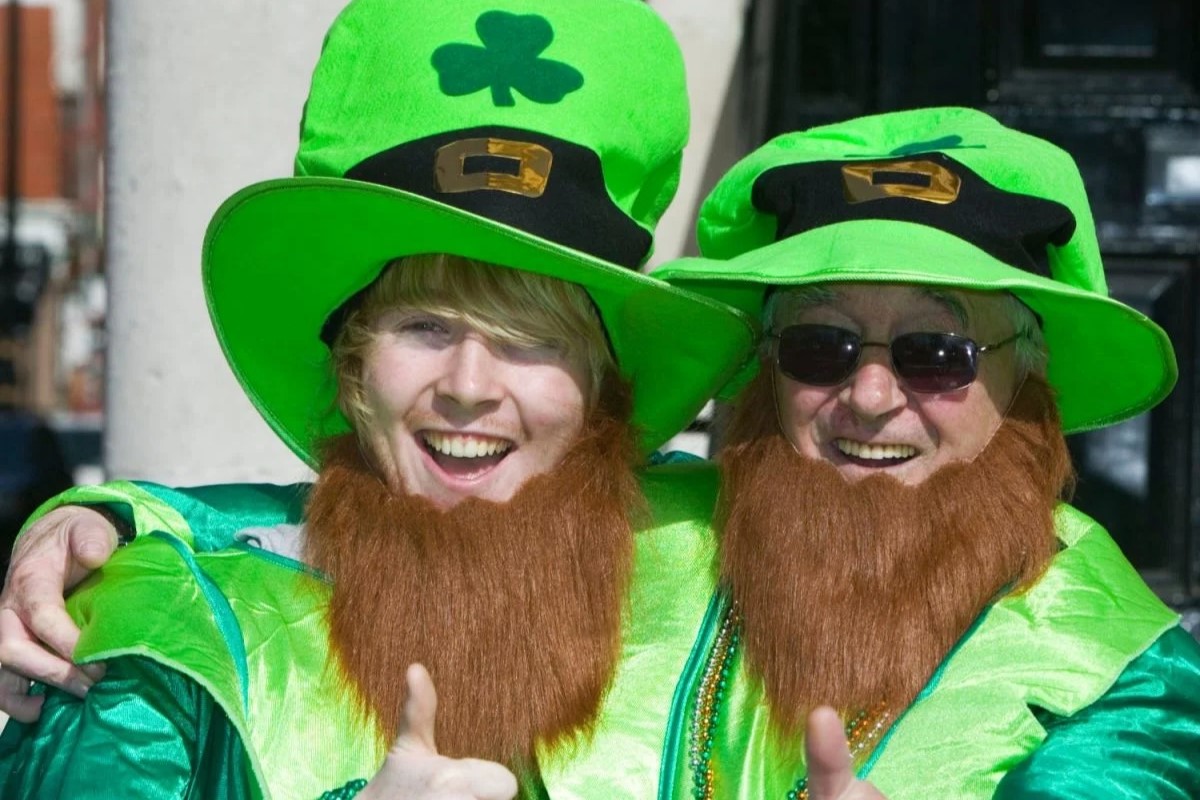10 Stereotypes That Make Irish People Cringe

Ever heard someone say all Irish people love potatoes or that they spend their days drinking Guinness? These stereotypes can make Irish folks cringe. While some might laugh them off, others find these assumptions annoying. Imagine being constantly asked if you have a leprechaun or if you live in a thatched cottage. These ideas often come from movies or TV shows, but they don't show the real Ireland. The country has a rich culture, modern cities, and diverse people. Let's look at ten common stereotypes that make Irish people shake their heads and roll their eyes.
The Drinking Stereotype
Irish people often cringe at the assumption that everyone in Ireland drinks excessively. While pubs and social drinking are part of the culture, it doesn't mean every Irish person drinks heavily.
- Not Everyone Drinks: Many Irish people choose not to drink alcohol at all.
- Family Gatherings: Social events often focus on family and friends, not just drinking.
- Health Conscious: Like everywhere, many in Ireland are health-conscious and avoid excessive drinking.
The Leprechaun Myth
The idea that Ireland is filled with leprechauns and pots of gold can be quite annoying. This stereotype reduces a rich culture to a cartoonish image.
- Rich Folklore: Irish folklore includes many different mythical creatures, not just leprechauns.
- Modern Society: Ireland is a modern country with advanced technology and infrastructure.
- Cultural Depth: The culture is deep and varied, with literature, music, and art that go beyond simple myths.
The Accent Assumption
Assuming all Irish people have the same accent can be frustrating. Ireland has a variety of accents, each unique to different regions.
- Regional Variations: Accents differ greatly between Dublin, Cork, Galway, and other areas.
- Global Influence: Many Irish people have lived abroad, influencing their accents.
- Individual Differences: Just like anywhere, individuals have unique ways of speaking.
The Potato Obsession
The stereotype that Irish people only eat potatoes is outdated and simplistic. While potatoes are a staple, the cuisine is diverse and evolving.
- Modern Cuisine: Ireland boasts a variety of foods, from seafood to international dishes.
- Gourmet Chefs: Many world-class chefs come from Ireland, creating innovative dishes.
- Cultural Fusion: The food scene includes influences from around the world, reflecting a global palate.
The Constant Rain
The idea that it always rains in Ireland is another stereotype that doesn't hold water. While the weather can be unpredictable, it’s not always gloomy.
- Sunny Days: Ireland enjoys plenty of sunny days, especially in the summer.
- Mild Climate: The climate is generally mild, not extreme.
- Outdoor Activities: Many outdoor activities are popular, showing that the weather is often pleasant.
The Red Hair Assumption
Assuming all Irish people have red hair is another common stereotype. While red hair is more common in Ireland than in many places, it’s still relatively rare.
- Diverse Hair Colors: Irish people have a variety of hair colors, including brown, black, and blonde.
- Genetic Diversity: The population is genetically diverse, leading to a range of appearances.
- Cultural Misconceptions: This stereotype oversimplifies the rich diversity of Irish people.
The Fighting Irish
The notion that Irish people are always ready for a fight is another stereotype that can be quite offensive. It paints a picture of aggression that doesn't reflect reality.
- Peaceful Society: Ireland is generally a peaceful country with low crime rates.
- Friendly People: Irish people are known for their friendliness and hospitality.
- Conflict Resolution: Like anywhere, conflicts are usually resolved peacefully.
The Rural Image
Many people think of Ireland as entirely rural, filled with farms and small villages. While the countryside is beautiful, Ireland also has bustling cities.
- Urban Centers: Cities like Dublin, Cork, and Galway are vibrant and modern.
- Tech Hub: Dublin is a major tech hub, home to many international companies.
- Cultural Hotspots: Urban areas are rich in culture, with theaters, museums, and music venues.
The Catholic Stereotype
Assuming all Irish people are devout Catholics is another outdated stereotype. While Catholicism has a significant history in Ireland, the population is religiously diverse.
- Religious Diversity: Many different religions are practiced in Ireland.
- Secular Society: A growing number of people identify as non-religious.
- Cultural Shifts: Society has become more open and accepting of different beliefs.
The Gaelic Speaker Assumption
Thinking that all Irish people speak Gaelic fluently is another misconception. While Gaelic is taught in schools, not everyone speaks it daily.
- Bilingual Education: Many people learn Gaelic in school but use English more frequently.
- Language Revival: Efforts are being made to revive and promote the Gaelic language.
- Daily Use: In some regions, Gaelic is spoken daily, but it’s not universal.
Breaking Stereotypes
Stereotypes about Irish people can be frustrating and misleading. These clichés often overshadow the rich culture, history, and individuality of Ireland's people. From the overemphasis on drinking to the misconceptions about leprechauns, these stereotypes do more harm than good. They reduce a vibrant and diverse population to a handful of tired clichés.
Understanding and appreciating the real Ireland means looking beyond these stereotypes. It involves recognizing the country's contributions to literature, music, science, and more. Irish people are proud of their heritage, but they are also modern, multifaceted individuals.
Next time you think about Ireland, remember there's so much more to discover than just the stereotypes. Embrace the true spirit of Ireland by learning about its history, engaging with its culture, and appreciating its people for who they really are.

